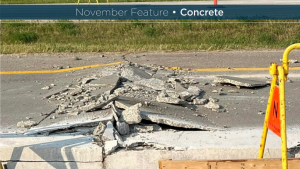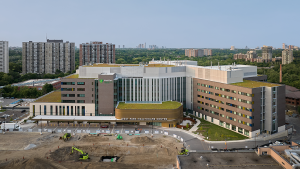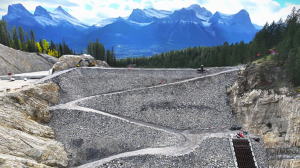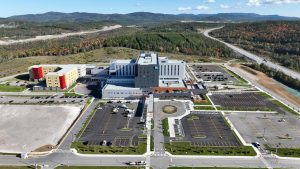Inuit communities should have the same opportunities as the rest of Canada when it comes to the infrastructure and services that many Canadians take for granted, said Natan Obed, opening keynote speaker at the 27th annual CCPPP Conference on Public-Private Partnerships.
“Inuit Nunangat faces significant gap in infrastructure and also a lack of many other social and economic development programs that might be considered to be just the fabric and the foundation of the way the which rest of Canada runs,” said Natan Obed, president of Inuit Tapiriit Kanatami (ITK), the national voice of Canada’s 65,000 Inuit.
“The opportunities for Canada’s Arctic are only going to be fully realized by supporting Inuit as partners in this country and partners in the development of this country. We need to be considered as rightful recipients of the services and programs that Canadians take for granted,” Obed explained.
“This gap also represents a significant opportunity for many of you in this room to work in partnership with the Inuit while generating a market return for your investment and driving a positive social impact on the environment and on Inuit communities,” he noted.
Obed explained Inuit Nunangat is a new term that Inuit have created for their homeland. Most Inuit live in 51 communities spread across the Inuvialuit Settlement Region (Northwest Territories). Inuit Nunangat encompasses Nunavut, Nunavik (Northern Quebec), and Nunatsiavut (Northern Labrador).
Unreliable energy and connectivity, outdated social infrastructure and lack of housing in Canada’s north make for a challenging environment in which to develop infrastructure, he noted.
“We have a basic lack of infrastructure which goes back to the very formation of our communities and the colonial relationships with entities that built the initial infrastructure has not been replaced by modern considerations for the infrastructure deficits that we have today,” said Obed.
In addition to being two to three generations behind in terms of connectivity, the area also lacks hospitals and a university. Also, most communities are “fly in, fly out” because they are not connected to southern Canadian road infrastructure.
“There is a lack of physical connection and the ease of moving goods and services across our homeland,” Obed said. “The reality of connecting one town to another, whether it’s through the labour force or goods and services just doesn’t exist. Every single project that happens in our homeland is its own little microcosm.”
He said the lack of infrastructure is not consistent with Canada’s vision for itself and it’s time to change that.
“What I described is a part of Canada but the service delivery and the infrastructure I described aren’t consistent with the way Canada imagines itself,” said Obed. “Imagine if you went to any community along the Great Lakes and there weren’t any docks, no way to offload ships into the community. That is the reality for a large majority of our 51 communities and that needs to change.”
Change is happening to improve infrastructure in Inuit Nunangat. ITK worked with Inuit leadership to create Inuit-Crown partnership committee which is chaired by Obed and the Prime Minister of Canada.
“It’s a direct commitment between the government and Inuit to make sure the priorities we have together can be implemented in a thoughtful structured way,” said Obed. “Infrastructure is one of the key priorities of the partnership. Right now, we are undergoing an exercise to cost out the infrastructure deficit in Inuit Nunangat region-by-region and situation-by-situation.”
The goal is to identify the deficit and look at solutions and ways to fund it over the coming years through the federal government.
He pointed to the new Iqaluit International Airport as an example of a successful P3 project in the region.
“I don’t have the power to say that P3 is the way to go in the future but we are looking for any possible ways to sustainably develop our communities to address the infrastructure gap and hopefully P3s can play a component in the solution to our infrastructure deficits,” Obed said.
He said the group will also explore opportunities with the Canada Infrastructure Bank.
“This country is still being built and the last big project to make this country whole is the investment in infrastructure within Inuit land,” he said.











Recent Comments
comments for this post are closed